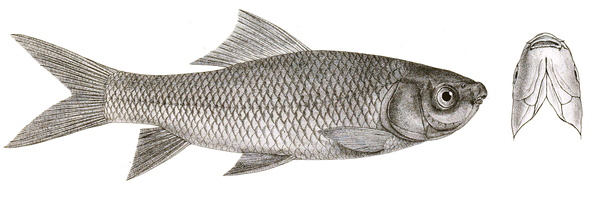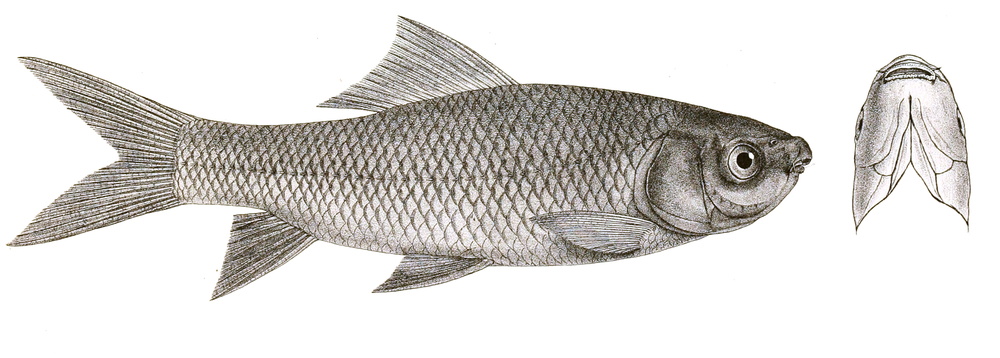Farming remarks
Labeo rohita is the natural inhabitant of freshwater sections of the rivers of north and central India and rivers of Pakistan, Bangladesh, Burma, Myanmar, and the Terai region of Nepal. L. rohita was introduced into rivers of peninsular India, Sri Lanka, Mauritius, Japan, China, and many other countries. Being a very quick growing carp and considered tastier than L. catla and Cirrhinus mrigala – the two other Indian major carps – it has been cultured for hundreds of years and is the most important among the three Indian major carp species. Despite this, wild information about home and depth ranges, migration, aggregation, aggression, and substrate are still missing for this species. L. rohita is a bottom-column feeder, less adapted to take zooplankton than other major carps, but with a wider feeding niche. This species is usually raised in polyculture systems with other carps. Structures such as bamboo poles can be used as periphyton substrate in these polycultures, and this species profits from it via adding food. Its entire life cycle is closed in captivity, but it is necessary to induce the reproduction by hormonal manipulation. Information about adults under farming conditions is missing, probably because this species is sold before reaching maturity. Farmed fish are mostly sold fresh on local markets, but in large farms they can also be washed in water, packed with crushed ice at a ratio of 1:1 in rectangular plastic crates, and transported for long distances. Thus, post-harvest processing is almost non-existent for this carp and, when sold live, the market value increases, which means that there is no slaughter protocol established for L. rohita.
For details see: WelfareCheck | farm




